Online Gather.town Pitches
Safety, Low Field & Interventional III
Joint Annual Meeting ISMRM-ESMRMB & ISMRT 31st Annual Meeting • 07-12 May 2022 • London, UK

| Booth # | ||||
|---|---|---|---|---|
4818 |
1 | Low-field Magnetic Resonance Imaging with MaRCoS
Vlad Negnevitsky1, Benjamin Menküc2, Thomas O'Reilly3, José Miguel Algarín4,5, Teresa Guallart6, Rubén Pellicer-Guridi4,5, Yolanda Vives-Gilabert7, Lincoln Craven-Brightman8, Jason Stockmann8, David Schote9, Marcus Prier10, Thomas Witzel11, Andrew Webb3, and Joseba Alonso4,5
1Oxford Ionics, Oxford, United Kingdom, 2University of Applied Sciences and Arts Dortmund, Dortmund, Germany, 3Department of Radiology, Leiden University Medical Centre, Leiden, Netherlands, 4MRILab, Institute for Molecular Imaging and Instrumentation (i3M), Spanish National Research Council (CSIC), Valencia, Spain, 5MRILab, Institute for Molecular Imaging and Instrumentation (i3M), Universitat Politècnica de València (UPV), Valencia, Spain, 6Tesoro Imaging S.L., Valencia, Spain, 7Department of Electronic Engineering, Universidad de Valencia, Valencia, Spain, 8Massachusetts General Hospital, A. A. Martinos Center for Biomedical Imaging, Charlestown, MA, United States, 9Physikalisch-Technische Bundesanstalt (PTB), Braunschweig and Berlin, Germany, 10Department of Biomagnetical Resonance, Otto-von-Guericke University Magdeburg, Forschungscampus STIMULATE, Magdeburg, Germany, 11Q Bio Inc., San Carlos, CA, United States
In recent years, low-field scanners have proven their potential for clinical, preclinical, research and teaching applications. However, a critical milestone is yet to be achieved on the path to affordable, high-performance MRI systems: the availability of an inexpensive, versatile electronic control system (MR console), competitive with commercial spectrometers, but without dramatically increasing the overall scanner cost. In this work we show the status of MaRCoS (MAgnetic Resonance COntrol System), an open-source MR console and software package with powerful features, that offers higher versatility than many commercial spectrometers, and show its use in several MR setups, including in vivo acquisitions.
|
||
4819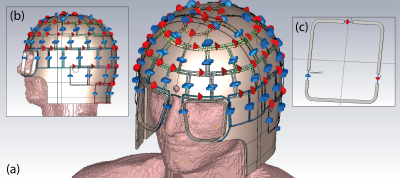 |
2 | Analysing the Influence of an Actively Detuned 64-channel Receive Array on SAR
Paul Mcelhinney1 and Shajan Gunamony1
1Center for Cognitive Neuroimaging, Glasgow University, Glasgow, United Kingdom We have generated a numerical model of a 64-channel receive array at 7T and analysed its influence on SAR on an 8-channel transmit array. Simulations were conducted using a finite integration technique in CST Microwave Studio to create a model of the combined Tx/Rx system on both our phantom and the Duke human body model. Each receive element was actively detuned and implemented within our 8 channel transmit array model to provide us with an improved model from which we found that there was a negligible effect on the B1+ field and a reduction in the SAR of ~20%. |
||
4820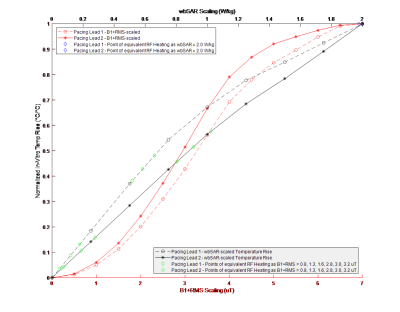 |
3 | Comparing 1.5T MRI RF Heating Based on SAR vs. B1+RMS MR Conditional Labeling
Shiloh Sison1 and Negin Behzadian2
1Research and Development, Abbott, Sunnyvale, CA, United States, 2Abbott, sylmar, CA, United States
With the emergence of B1+RMS as a more precise RF exposure metric than SAR, implantable device manufacturers have begun MR Conditional labeling to fixed B1+RMS levels, in addition to SAR labeling. We previously characterized the relationship between wbSAR-scaled and B1+RMS-scaled RF heating of cardiac pacing leads in the context of 3T Normal Operating Mode and First Level Controlled Mode MRI exposure [1]. In this study, we extend the analysis to 1.5T.
|
||
4821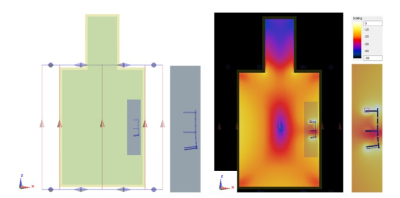 |
4 | A mesh-based CNN for the evaluation of MR RF-induced heating of complex-shaped passive implants
Jiajun Chang1, Jianfeng Zheng1, Ran Guo1, Qianlong Lan1, Mayur Thakore2, Wolfgang Kainz3, and Ji Chen1
1Electrical and Computer Engineering, University of Houston, Houston, TX, United States, 2Stryker Corporation, Mahwah, NJ, United States, 3High Performance Computing for MRI Safety, LLC, Jasper, GA, United States
In this research, a convolutional neural network (CNN) model is developed to predict the RF-induced heating for several tibia plate systems. One thousand four hundred and sixteen device configurations were developed, and the peak 1g-average SAR values were extracted. A subset of the data was used as training set and simulation meshes were used as the input of the CNN model. Results showed a quick network convergence and high correlation. The network also had a low absolute and percentage error level. This demonstrates that one can potentially use CNN model to predict the RF-induced heating of plate systems.
|
||
4822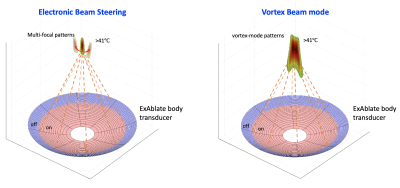 |
5 | Volumetric ultrasound hyperthermia treatment using the ExAblate body MR-guided Focused Ultrasound (MRgFUS) system
Kisoo Kim1, Muhammad Zubair2, Chris J Diederich2, and Eugene Ozhinsky1
1Radiology & Biomedical Imaging, University of California, San Francisco, San Francisco, CA, United States, 2Radiation Oncology, University of California, San Francisco, San Francisco, CA, United States
Hyperthermia refers to a cancer treatment by elevating tissue temperature to 40-45 °C. Hyperthermia can be achieved by clinical MRgFUS system, allowing real-time temperature monitoring for the precise control of hyperthermia heating. Currently the ExAblate is MR-guided FUS ablation system with the largest installation worldwide, however, requires advanced beamforming strategies for volumetric hyperthermia. This study proposed electronic beam steering, multi-focal patterns, and sector-vortex beamforming approaches in conjunction with partial array activation and was evaluated in biothermal simulations and phantom experiments. This study demonstrated the feasibility of sustained large volume heating with MR thermometry feedback using the ExAblate body system.
|
||
4823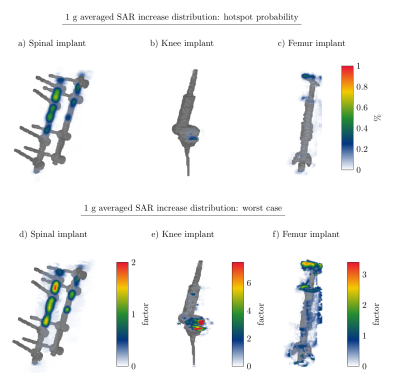 |
6 | Workflow for Personalized RF Safety Assessment of Orthopedic Implants in MRI, a Proof of Concept
Peter Stijnman1,2, Bart Steensma1, Gerrit Melis3, Cornelis van den Berg1, and Alexander Raaijmakers4
1Computational Imaging, UMC Utrecht, Utrecht, Netherlands, 2Biomedical Engineering, Eindhoven University of Technology, Eindhoven, Netherlands, 3Radiology, UMC Utrecht, Utrecht, Netherlands, 4Eindhoven University of Technology, Eindhoven, Netherlands
Patients with non-labelled implants are often ineligible for MRI. Sometimes non-labelled implants are scanned by some hospitals based on literature and empirical insights, power constraints are abided to avoid tissue heating. Using an accelerated simulation method we demonstrate a proof of concept workflow to obtain the patient-specific SAR increase for multiple patient and implant positions within 2-3 hours. This workflow uses two orthogonal X-ray images to construct a 3D model of the implant which is inserted in a human model. The method enables more accurate scanning constraints and, a more informed risk vs benefit analysis for each patient.
|
||
4824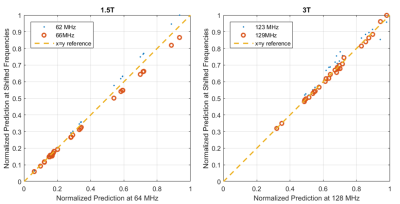 |
7 | Impact of RF Frequency Variation on AIMD MRI RF Safety Assessment
Xin Huang1, Xiyao Xin1, Kevin Feng1, Vick Chen1, and Shiloh Sison1
1Abbott Laboratories, Sylmar, CA, United States
To assess the impact of RF frequency variation on AIMD MRI RF safety, the tangential electric field and cardiac pacing lead electrode RF heating transfer functions were obtained at different frequencies: around 64 MHz for 1.5T scanners and 128 MHz for 3T scanners. The result shows that the impact on in vivo RF heating prediction due to RF frequency shift is insignificant.
|
||
4825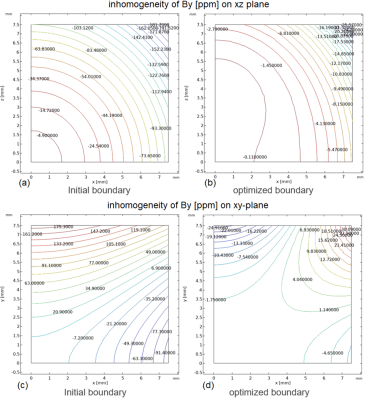 |
8 | Design of a permanent magnet for a 0.55 T tabletop MRI
Feng Jia1, Sebastian Littin1, Philipp Amrein1, and Maxim Zaitsev1,2
1Department of Radiology, Medical Physics, Medical Center University of Freiburg, Faculty of Medicine, University of Freiburg, Freiburg, Germany, 2High Field MR Center, Center for Medical Physics and Biomedical Engineering, Medical University of Vienna, Vienna, Austria
Optimize the shape of pole shoes of a 0.55 T permanent magnet to increase the homogeneity of the main magnetic field in a region of interest.
|
||
4826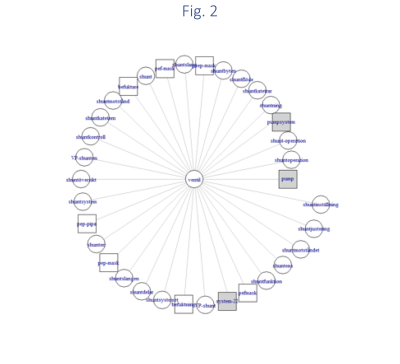 |
9 | The Potential of AI-Based Clinical Text Mining to Improve Patient Safety: the Case of Implant Terms and Patient Journals
Marina Santini1, Oskar Jerdhaf2, Anette Karlsson2, Emma Eneling3, Magnus Stridsman3, Arne Jönsson4, and Peter Lundberg2,5
1Digital Health, Research Institutes of Sweden (RISE), Stockholm, Sweden, 2Radiation Physics, Linköping University, Linköping, Sweden, 3Unit for Technology Assessment, Testing and Innovation and Department of Health, Medicine and Caring Sciences, Linköping University, Linköping, Sweden, 4Department of Computer and Information Science, Linköping University, Linköping, Sweden, 5Center for medical Imaging and Visualization (CMIV), Linköping, Sweden
It is important for radiologists to know in advance if a patient has an implant, since MR-scanning is incompatible with some implants. At present, the unbiased process to ascertain whether a patient could be at risk is manual and not entirely reliable. We argue that this process can be enhanced and accelerated using AI-based clinical text-mining. We therefore investigated the automatic discovery of medical implant terms in electronic-medical-records (EMRs) written in Swedish using an AI-based text mining algorithm called BERT. BERT is a state-of-the-art language model trained using a deep learning algorithm based on transformers. Results are promising.
|
||
4827 |
10 | MRI Gradient Induced Device Heating of Leadless Pacemakers
Michael Childers1, Dorab Sethna1, Vick Chen1, and Shiloh Sison2
1Abbott, Sylmar, CA, United States, 2Abbott, Sunnyvale, CA, United States
Simulations and benchtop testing were performed to assess potential gradient induced device heating of leadless pacemakers. Results of the evaluation showed leadless pacemakers sized objects, made from commonly used conductive materials, heated less than 1°C when exposed to the gradient induced device heating safety test conditions per ISO/TS 10974. In general, a temperature rise less than 2°C is considered to be clinically insignificant. As such, the risk of leadless pacemaker gradient induced device heating is negligible and assessments for this hazard per ISO/TS 10974 may not be necessary.
|
||
4828 |
11 | Evaluation of 3D Tailored Excitation Sequences on the MRI Safety Assessment of Transvenous Implantable Pacemaker, ICD or CRT System
Kevin Feng1, Ruoli Jiang1, and Shiloh Sison1
1Abbott Laboratories, Sylmar, CA, United States
A 3D tailored excitation sequence at 3T was found to have peak RF simultaneous with gradient slewing. The exposure levels generated by this sequence were determined and impact to the transvenous implantable pacemakers, implantable Cardioverter Defibrillators (ICDs) and Cardiac Resynchronization Therapy (CRT) systems safety evaluation of RF and gradient voltages was assessed. It is demonstrated that the combined RF and gradient level is expected to be covered by the separate RF and gradient test level required by ISO/CD 10974, and the bandwidth of the 3D sequence is well within the frequency ranged specified in ISO/CD 10974.
|
||
4829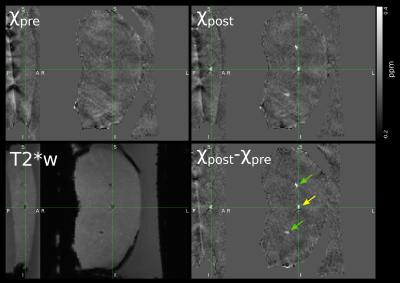 |
12 | QSM as a Potential Treatment Efficacy Indicator for MR-HIFU-mediated Histotripsy
Johannes Lindemeyer1, Lukas Christian Sebeke1, Ari Partanen2, Christian Lucas Haas1, and Holger Grüll1,3
1Department of Diagnostic and Interventional Radiology, Faculty of Medicine and University Hospital Cologne, University of Cologne, Cologne, Germany, 2Profound Medical Inc, Mississauga, ON, Canada, 3Department of Chemistry, Faculty of Mathematics and Natural Sciences, University of Cologne, Cologne, Germany
High intensity focused ultrasound-mediated histotripsy is a modality for targeted, non-invasive interventions. As temperature changes detected by MR-thermometry are not directly related to histotripsy treatment success, we propose quantitative susceptibility mapping (QSM) to evaluate and monitor treatment efficacy. Fresh porcine heart muscle tissue was sonicated using a clinical MR-HIFU system. Herein, we demonstrate the successful visualization of histotripsy-induced lesions by QSM.
|
||
4830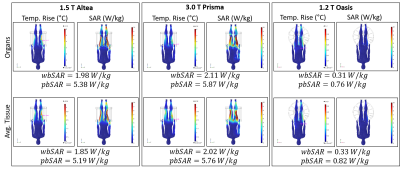 |
13 | Comparison of RF-Induced Heating of a Vascular Stent in an ASTM Phantom and Two Virtual Human Anatomies in Open and Closed Bore MRI Systems
Eric D. Anttila1, Grant M. Baker1, Alan R. Leewood1, Seoggwan Kim1, and David C. Gross1
1MED Institute Inc., West Lafayette, IN, United States
The primary goal of this study was to compare radiofrequency (RF) induced temperature rises of a stent within the ASTM phantom and two virtual human anatomies in a 1.2 T Hitachi Oasis open bore, 1.5 T Siemens Altea closed bore, and 3.0 T Siemens Prisma closed bore MRI systems for the purpose of MRI labeling according to ASTM F25031. The secondary goal was to simulate RF-induced heating of the same stent within the Duke virtual human model containing 1) internal organs with individual material properties and 2) no internal organs and average tissue properties throughout and compare predicted temperature rises.
|
||
The International Society for Magnetic Resonance in Medicine is accredited by the Accreditation Council for Continuing Medical Education to provide continuing medical education for physicians.